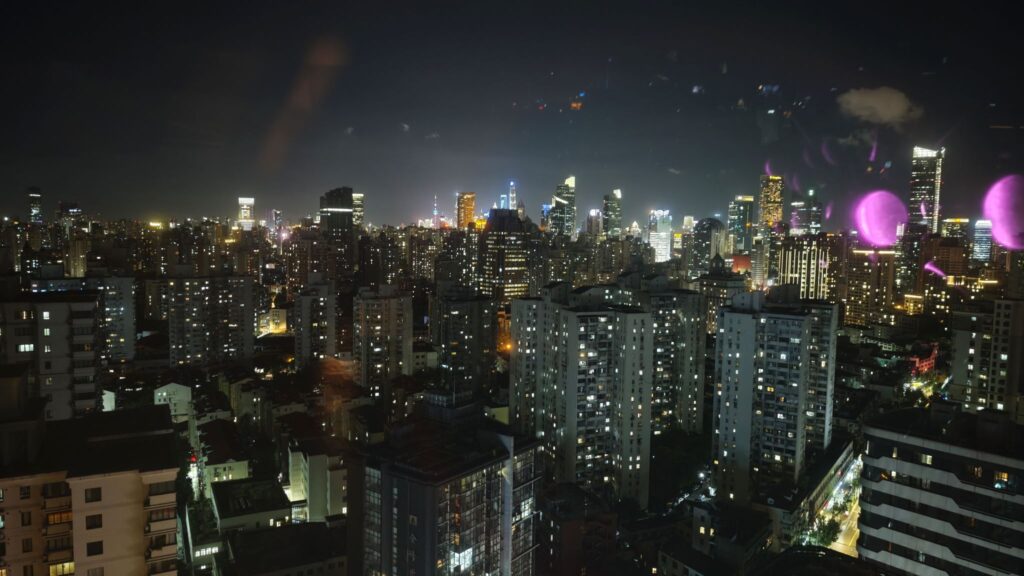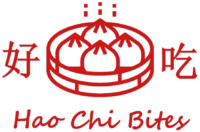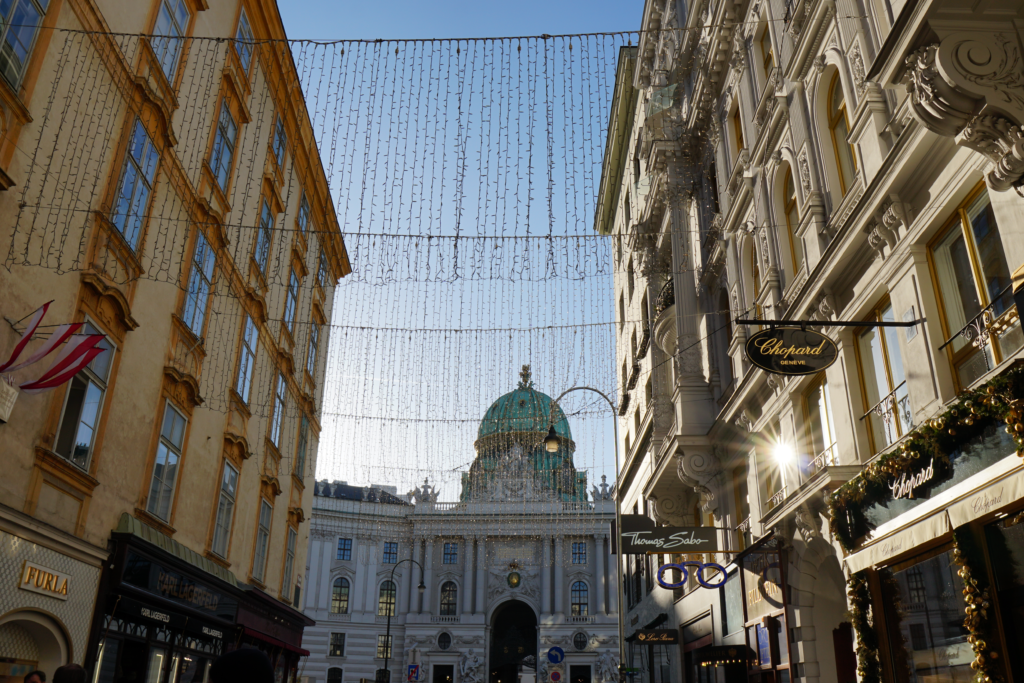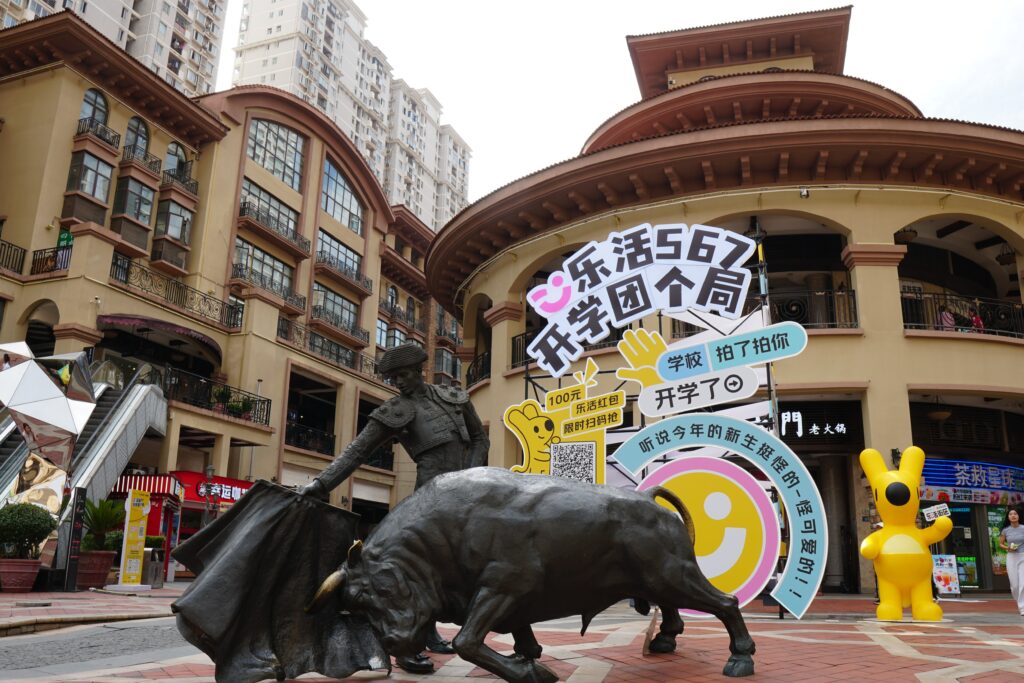In the fall of 2024, we found ourselves back in Shanghai and are excited to introduce you to one of the city’s most cherished attractions – the Yuyuan Garden. Of course, we’ve also brought along plenty of food highlights from China to share with you today!
We start the day at a hotel in Shanghai’s Xuhui district, enjoying a breathtaking view of the skyline.
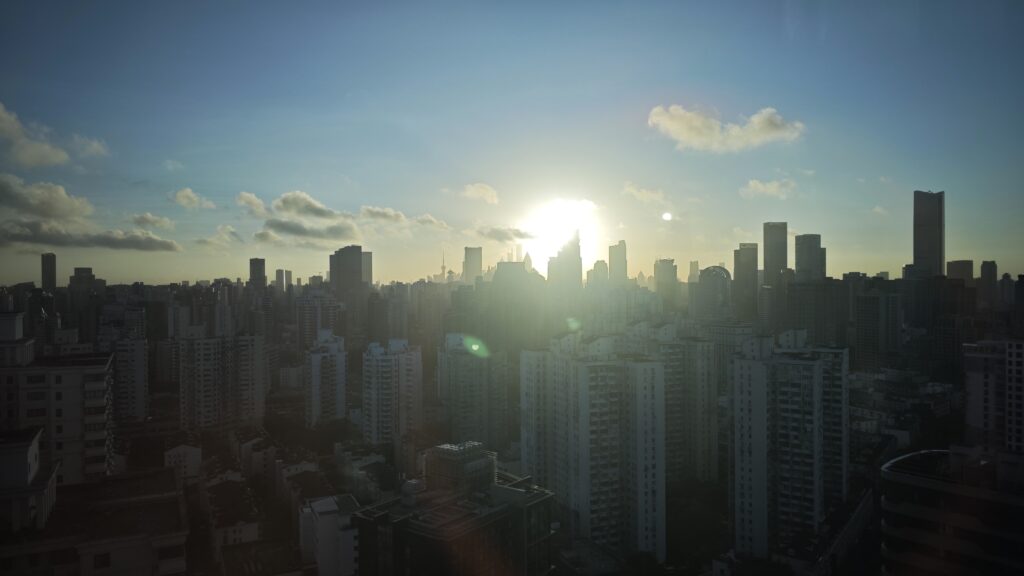
After getting ready, we head to a fantastic Shanghai restaurant chain called 老鸿兴 (Lǎo Hóng Xīng), which translates to “Venerable and Noble Star,” for breakfast. This spot offers delicious and nutritious dishes at truly fair prices. Here are some of our breakfast recommendations:
For a gentle start to the day and a soothing meal that’s easy on the stomach, the traditional Chinese porridge or rice congee (Zhōu – 粥) is the perfect choice. We highly recommend trying Nánguā Zhōu (南瓜粥), a pumpkin congee, and Pídàn Shòuròu Zhōu (皮蛋瘦肉粥), a savory congee with century egg and lean pork.
Nánguā Zhōu is a Chinese pumpkin porridge with a mild, sweet flavor from the pumpkin and a soft, creamy texture.
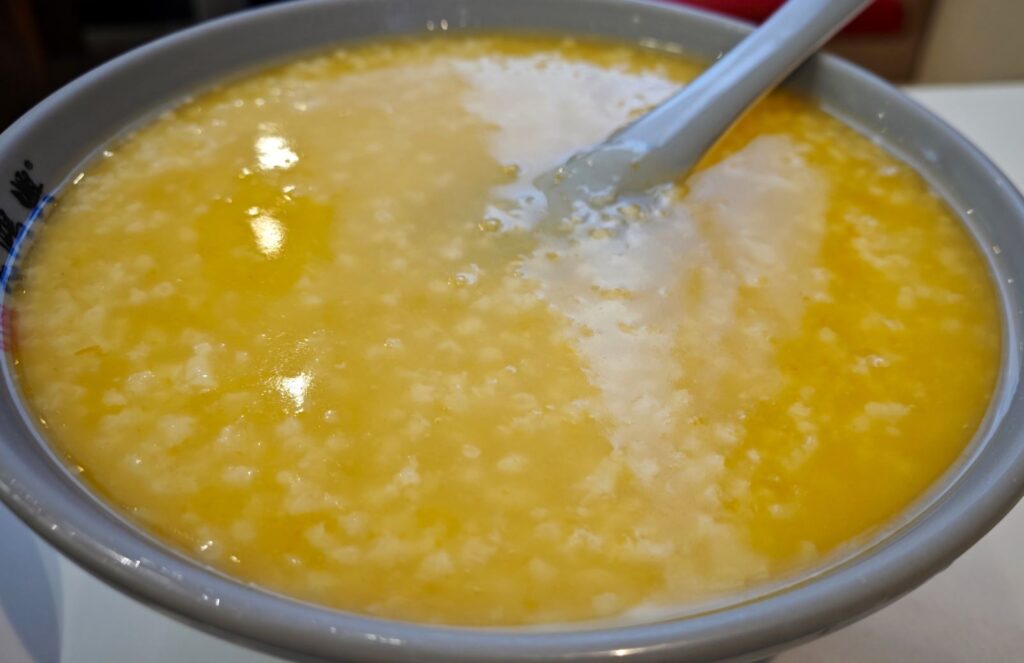

Pídàn Shòuròu Zhōu is a breakfast classic in China. This rice porridge is made with tender, finely chopped pork (瘦肉, Shòuròu) and flavorful preserved duck eggs (皮蛋, Pídàn). Known as century eggs or black eggs, these eggs are aged in a special alkaline solution, giving them a dark, jelly-like texture. The combination of pork and egg adds a heaty, salty, and slightly mineral flavor to the porridge, while the ingredients create an intriguing contrast to the soft consistency of the rice base.
If porridge or rice congee isn’t your thing, you can opt for a broccoli soup with century eggs (皮蛋, pídàn), Chinese sausage, and shrimp. The soup is mild and velvety, enriched by the umami flavor of the eggs and the slightly sweet and savory notes of the shrimp and sausage slices.
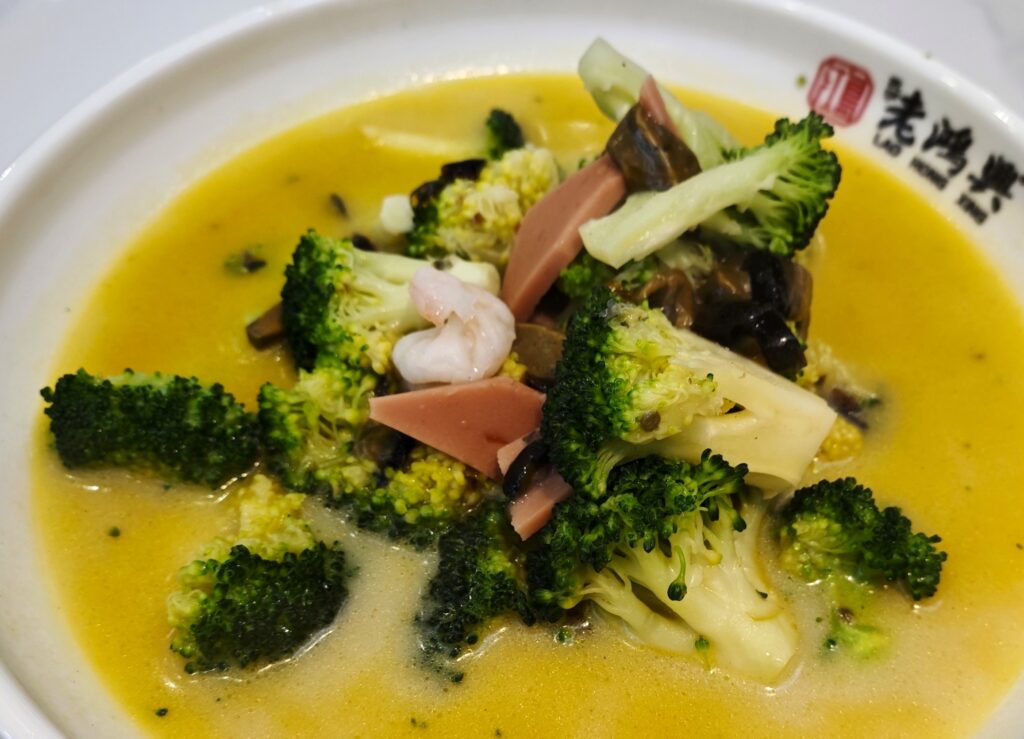
Of course, Chinese breakfast can’t be without dumplings—and Lao Hong Xing delivers! Here, you’ll find the famous Xiao Long Tang Bao (小笼汤包) from Shanghai, which we’ve introduced before.
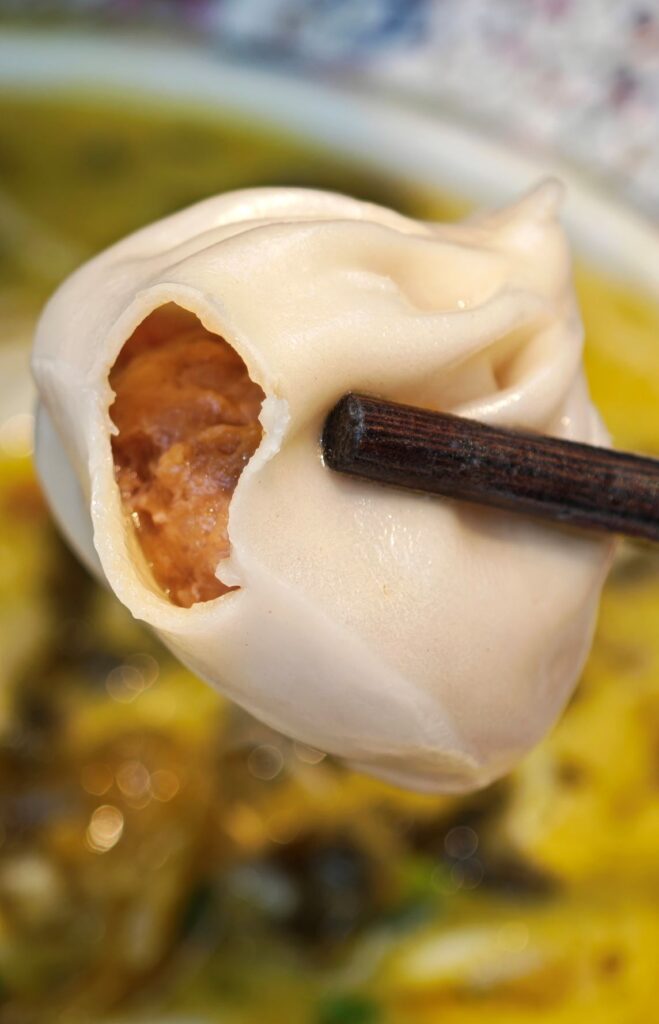
Another must-try are the Jiǎozi Guōtiē (饺子锅贴), dumplings that are first boiled or steamed and then pan-fried. The result? A crispy bottom and a delicate, tender top. These savory dumplings are filled with minced meat and/or vegetables and, like most Chinese dumplings, are served with soy sauce, vinegar, and a touch of chili oil.
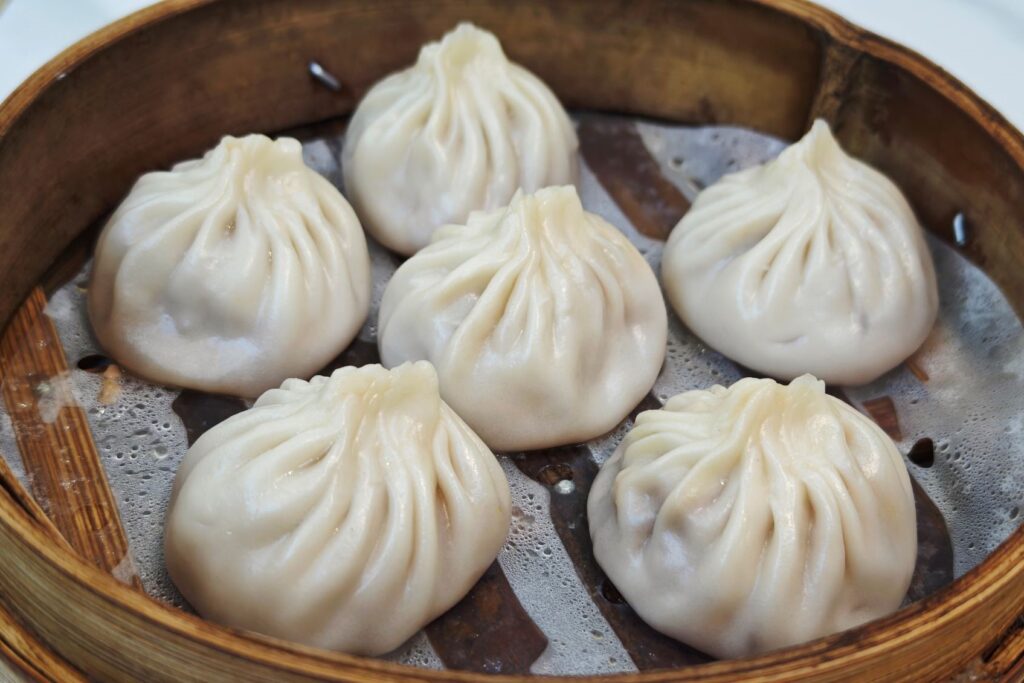
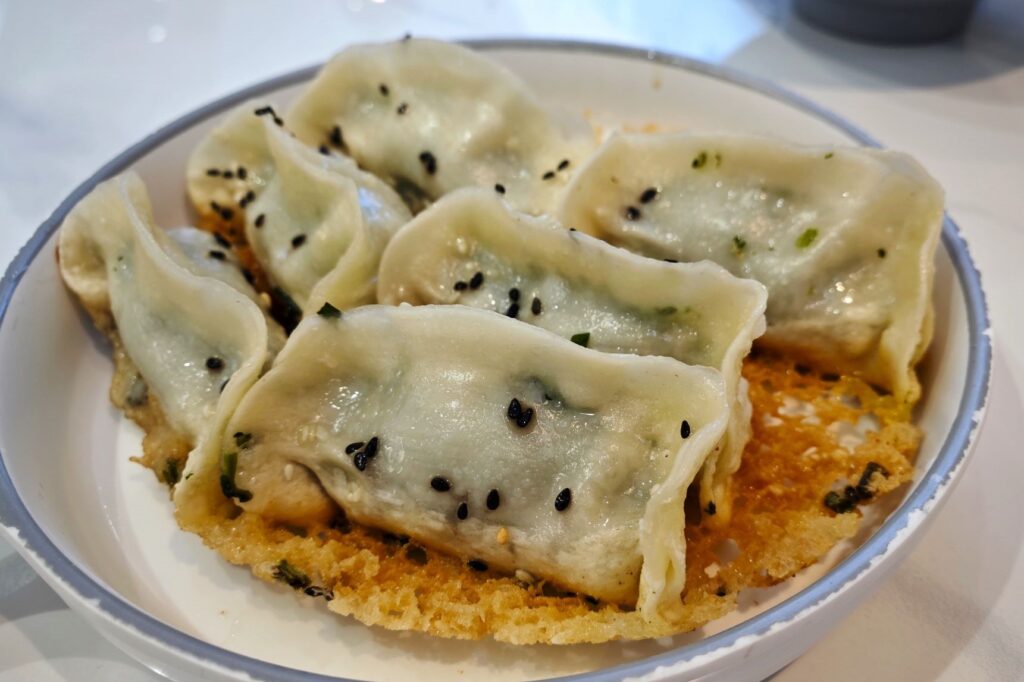
Similar to Jiǎozi, Jiǔcài Hézi (韭菜盒子) is a Chinese pastry filled with chives, egg, and optionally pork or shrimp. The dough is pan-fried, resulting in a crispy exterior and a soft interior. The chives add a mildly pungent and fresh flavor, the egg provides a soft texture, and the optional meat brings a savory richness.
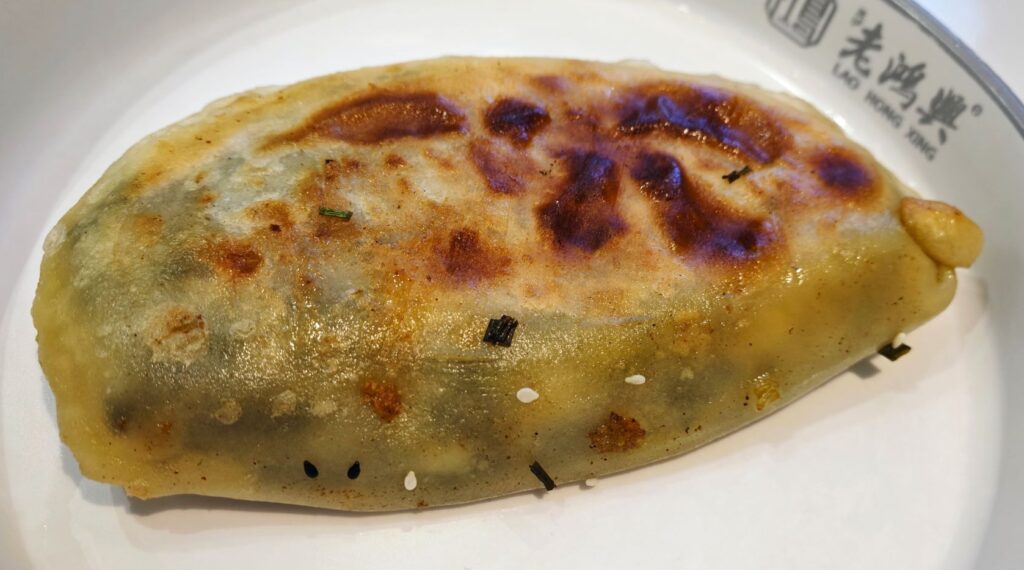
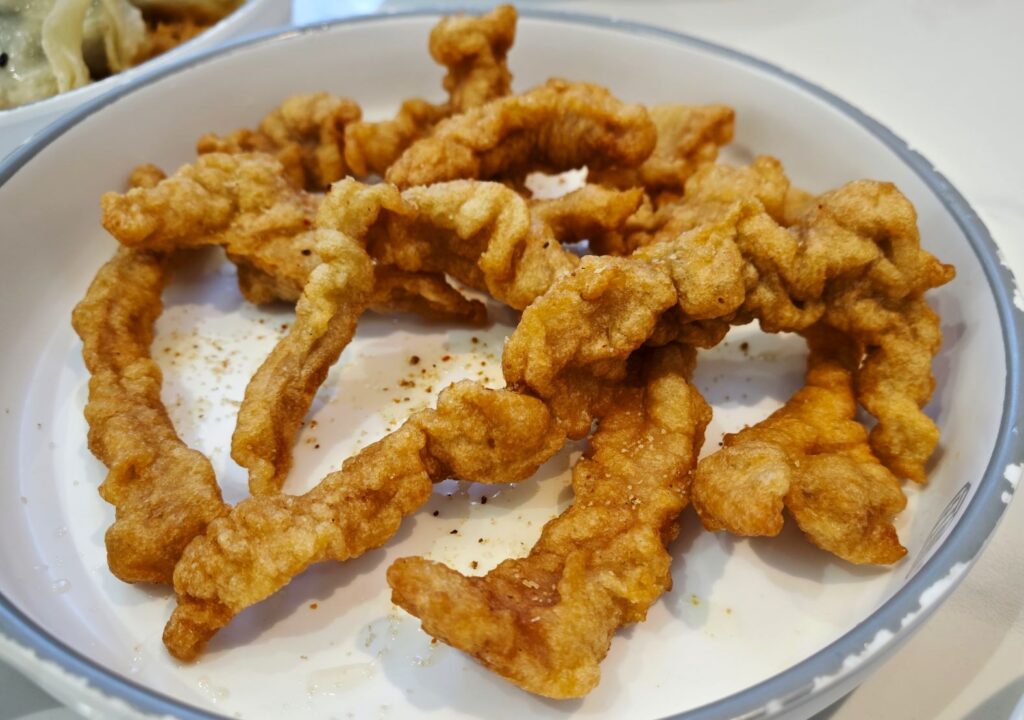
Xiǎo Sūròu (小酥肉) is a popular snack in northern Chinese cuisine. These are small, crispy pieces of pork that are first marinated in a flavorful blend of spices and then deep-fried. They have a savory umami taste with a hint of sweetness and a wonderfully crispy texture.
Lao Hong Xing restaurant offers a wide array of breakfast options, but also dishes you can enjoy throughout the day, for example – the “chicken that makes your mouth water”. Sounds tempting, right? That’s the translation of a highly popular Chinese dish: 口水鸡 (Kǒushuǐ Jī). The traditional version hails from Sichuan and is typically spicy, served with a flavorful Sichuan sauce. However, the Shanghai version differs significantly from this classic preparation. It’s not spicy but instead features a sweet and umami-rich sauce made from soy sauce, rice wine, possibly rice vinegar, sesame oil, and fermented beans.
The chicken is traditionally poached, making it incredibly tender and juicy. Kǒushuǐ Jī is served cold and garnished with sesame seeds.
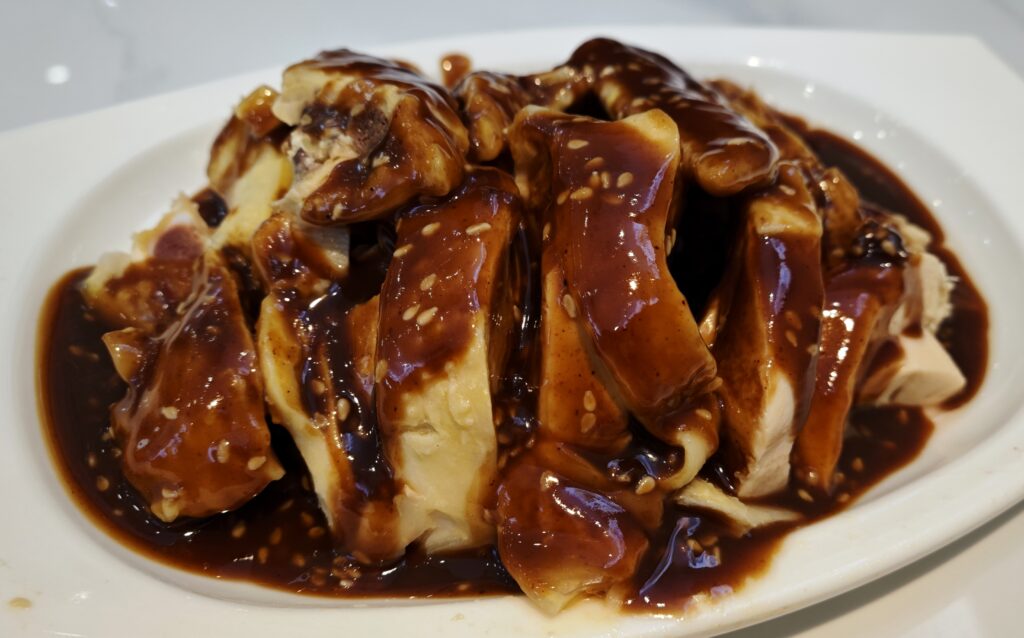
Our final recommendation is for those who can handle a bit of spice: Suan Cai Yu (酸菜鱼), a traditional dish from Sichuan Province. It features tender fish cooked in a flavorful broth with pickled sour vegetables, similar to sauerkraut. The taste is one-of-a-kind, blending tanginess, heat, and umami. The broth is savory, slightly spicy, and infused with numbing Sichuan peppercorns.
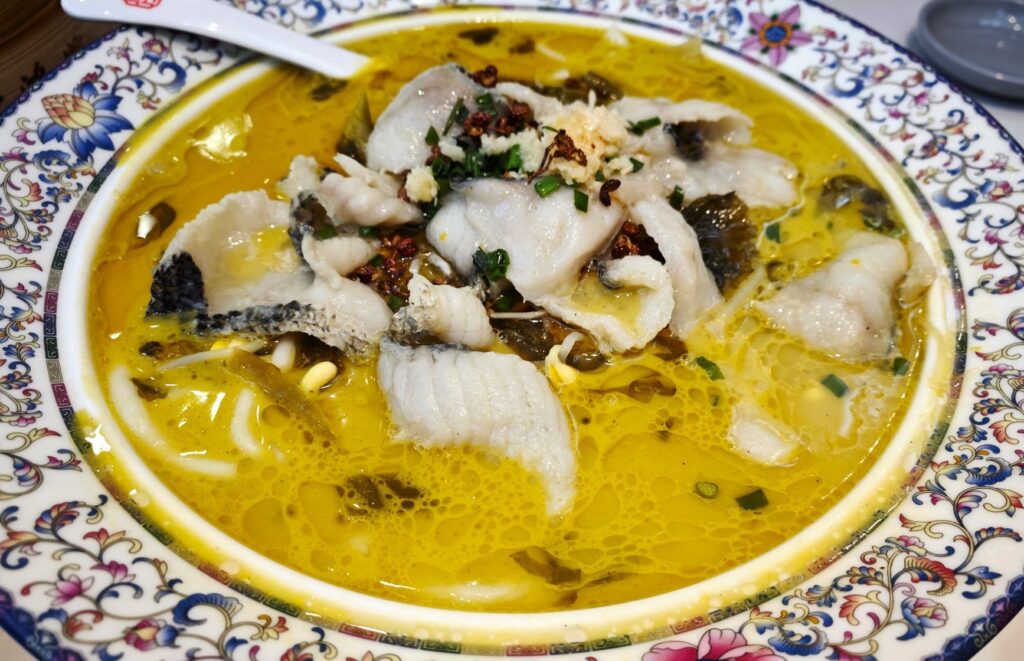
After a hearty breakfast, a relaxing day of sightseeing is on the agenda – we’re heading to the Yuyuan Garden.
The Yuyuan Garden is easiest to reach by subway. Not only is it affordable, but it’s also incredibly convenient. Simply get off at Yuyuan Garden Station (豫园站), take Exit 1, and follow the signs—the garden is just a 5-10 minute walk away.
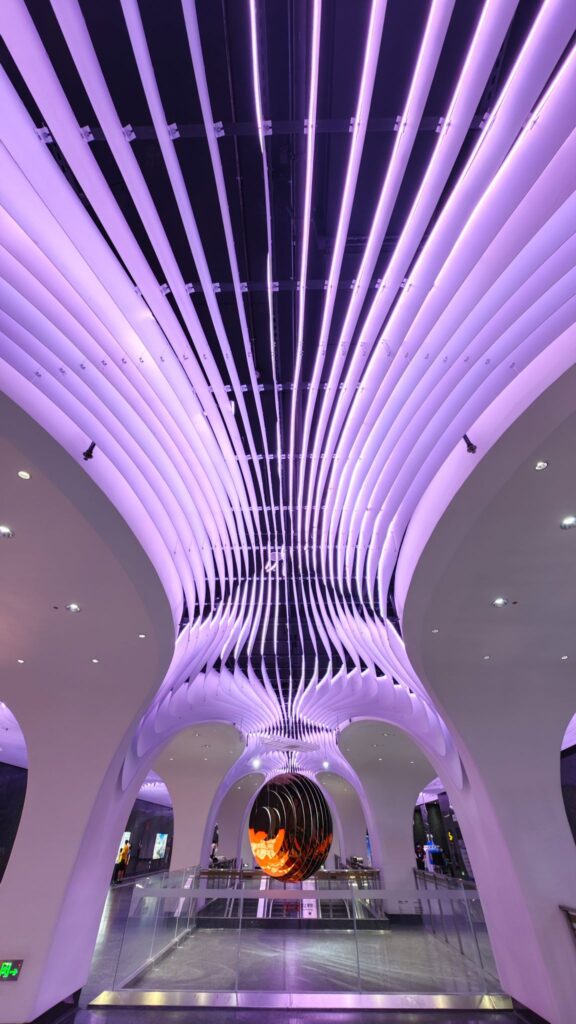
Alternatively, you can take a taxi or Didi (the Chinese equivalent of Uber). Just show the driver the Chinese name “豫园” or say “Yuyuan” and they’ll drop you off right at the entrance.
Be warned: during peak hours, traffic can be incredibly frustrating and it might take a long time—at those times, the subway is definitely the better option.
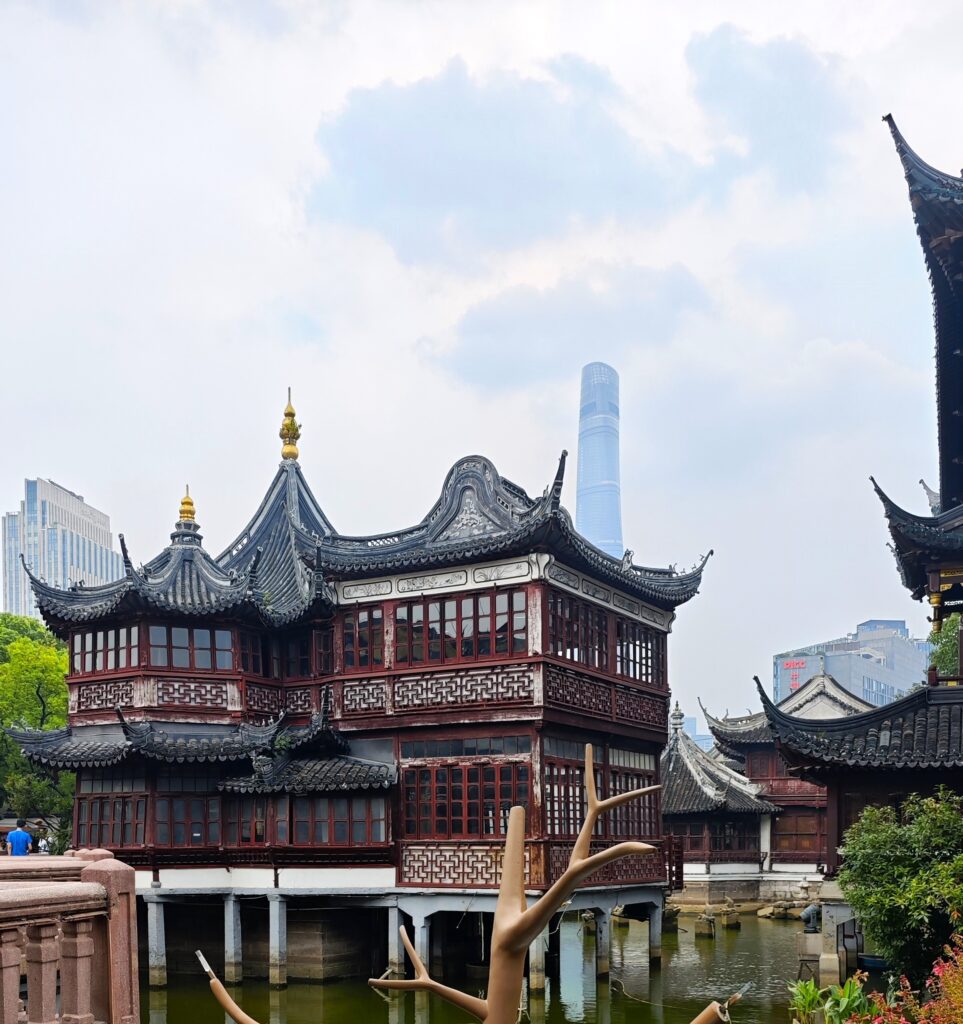
So what makes this garden so special? The Yùyuán, or simply Yù Garden (豫园), is a historic and widely renowned masterpiece of classical Chinese garden design. It is one of the most popular attractions in Shanghai’s Old Town, drawing countless visitors every year.
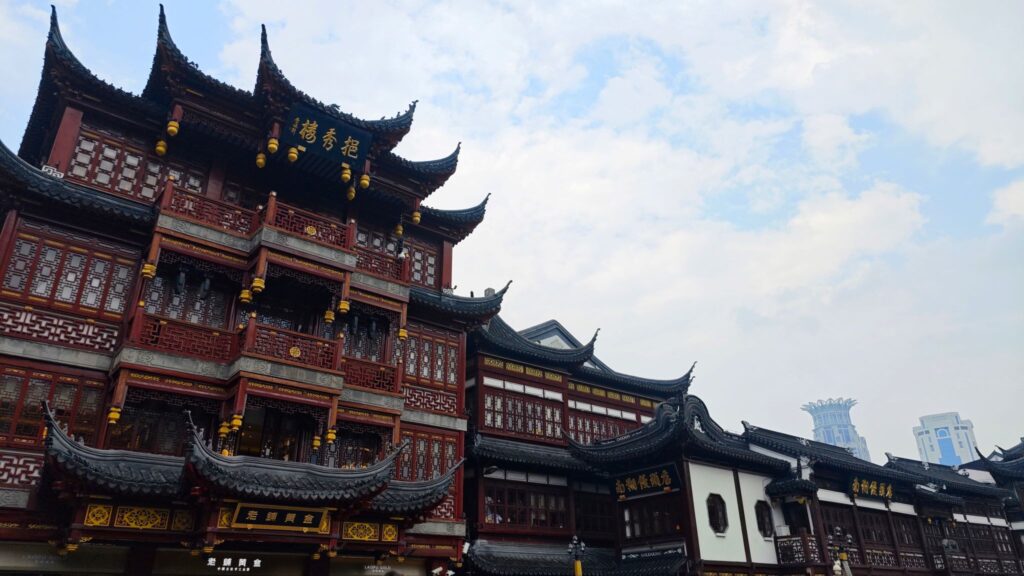
The Chinese word “Yù” stands for “contentment” or “joy,” and “Yuán” is the term for a garden. Hence, the name “Garden of Contentment” or “Garden of Happiness.” This name reflects the original intent and philosophy of the garden: to create a peaceful space that embodies the harmony between man and nature.
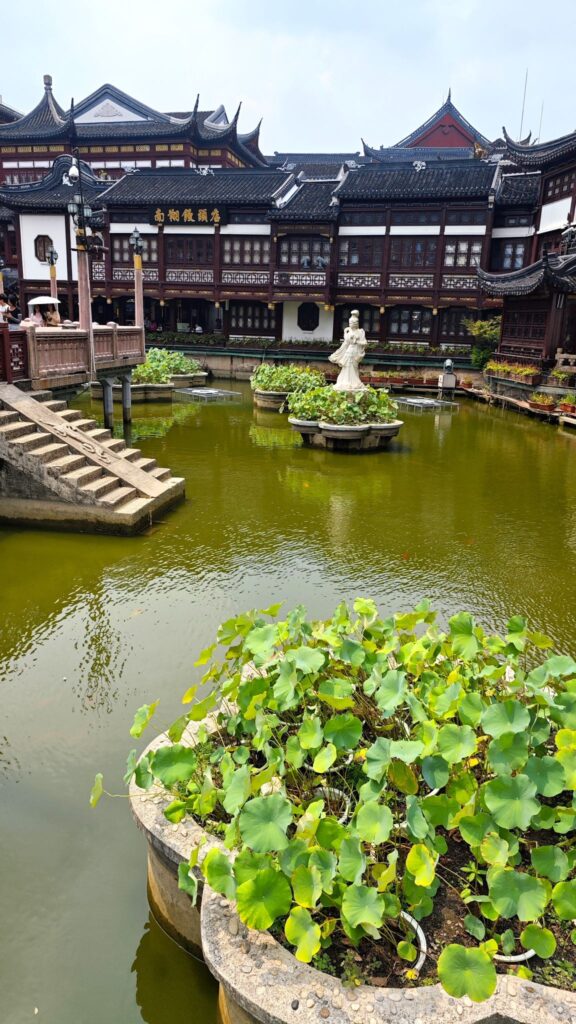
The garden was originally created in 1559 during the Ming Dynasty (1368-1644) by Pan Yunduan, a wealthy official, for his parents so they could spend their later years in peace and tranquility. After years of decay and destruction (such as during the First Opium War and the Sino-Japanese Wars), the garden was restored multiple times, most recently in the 20th century, to bring back its original splendor from the Ming Dynasty.
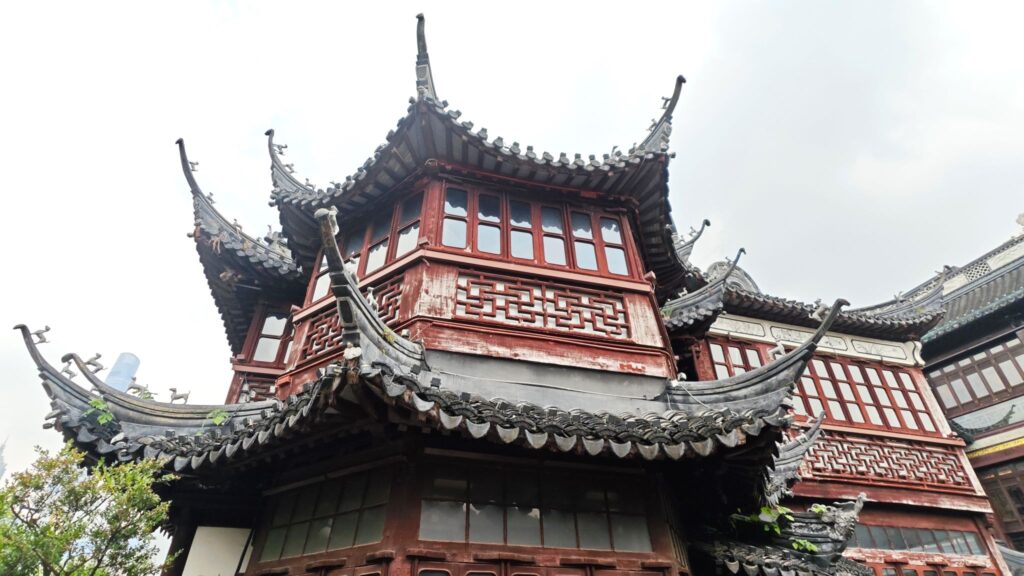
During the restoration, pavilions, bridges, and walls were repaired, the landscape was meticulously maintained, and modern elements like paths and signage were added to meet the needs of today’s visitors. This has transformed the garden into a living historical site, accessible to both locals and foreigners alike.
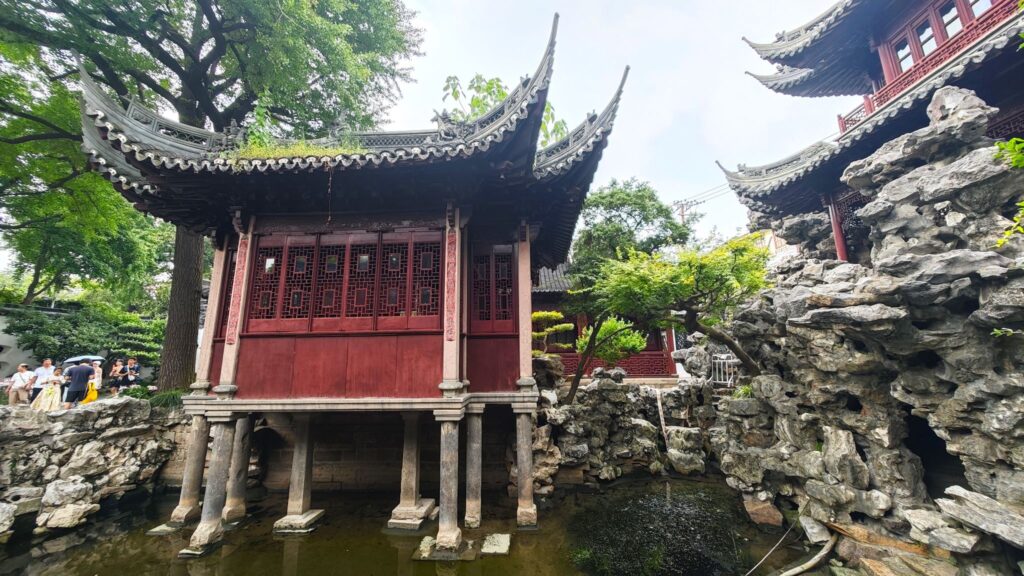
In the Yuyuan Garden, there are several sights you definitely shouldn’t miss:
The Great Rockery (大假山, Dà Jiǎ Shān) is one of the most famous attractions of the garden. This artificial limestone rock formation, reaching up to 14 meters in height, impresses with its complex arrangement of rocks and caves, creating a fascinating labyrinth. It stands as an outstanding example of Chinese garden artistry and is meant to symbolize the grandeur of nature. Additionally, it offers visitors a beautiful vantage point.
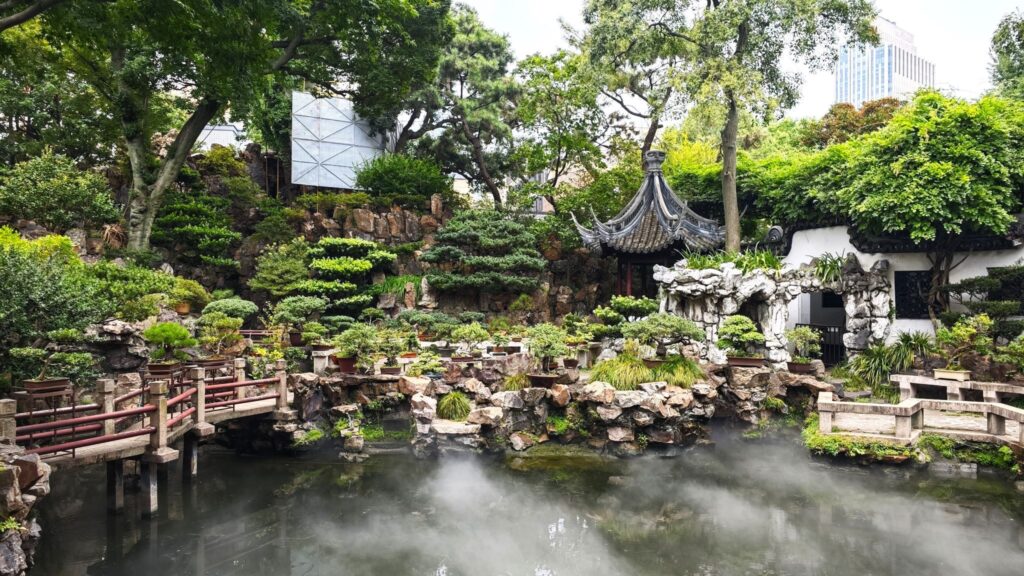
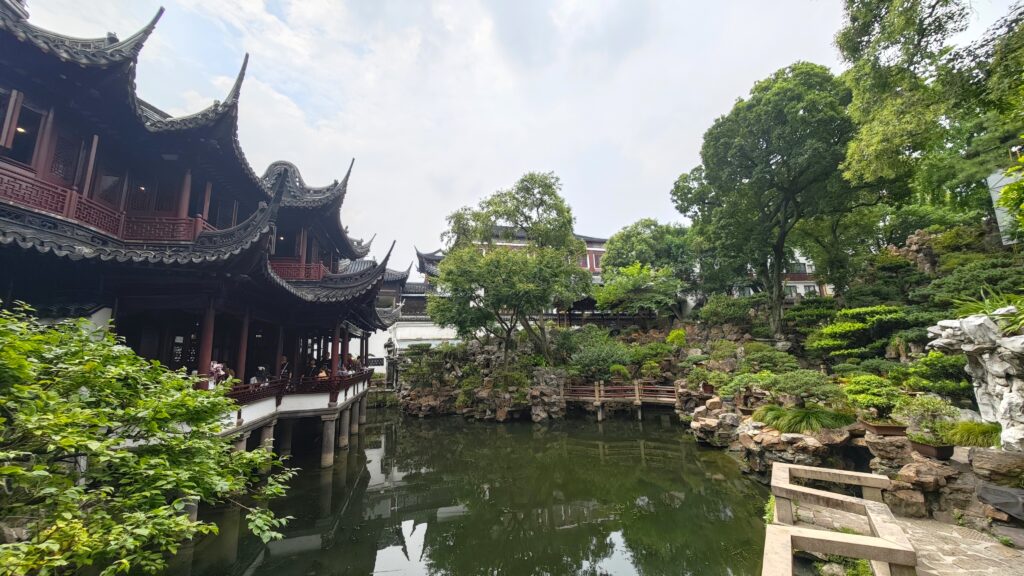
Another highlight is the Jade Rock, an impressive 3.3-meter-high stone with a perforated structure. What makes it special is the interplay of light and shadow created by the numerous natural openings in the rock.
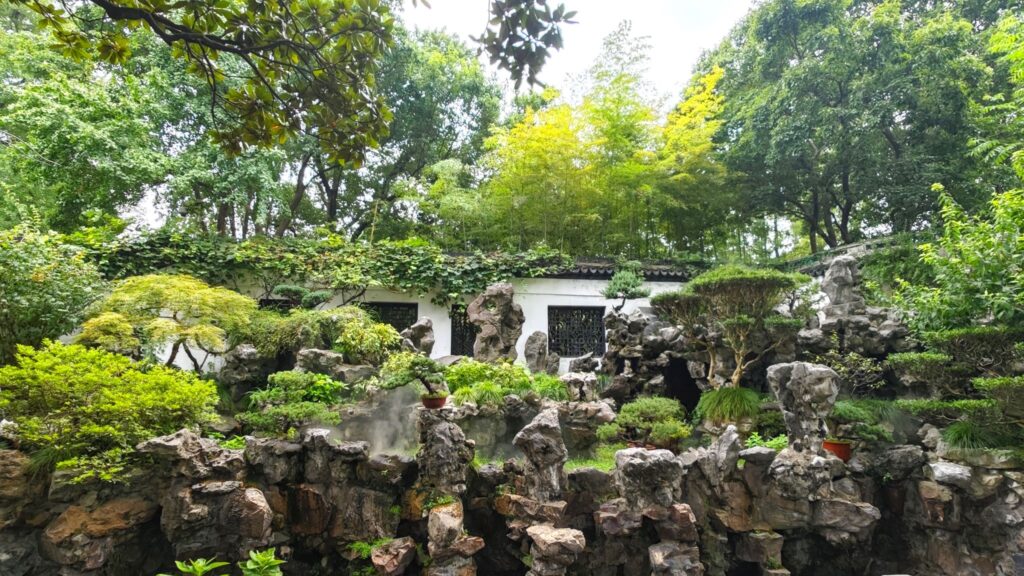
The garden is famous for its picturesque ponds, where koi fish swim gracefully, as well as for the charming zigzag bridge (also known as the Jiuqu Bridge, 曲桥, Qū Qiáo) that spans across the water.
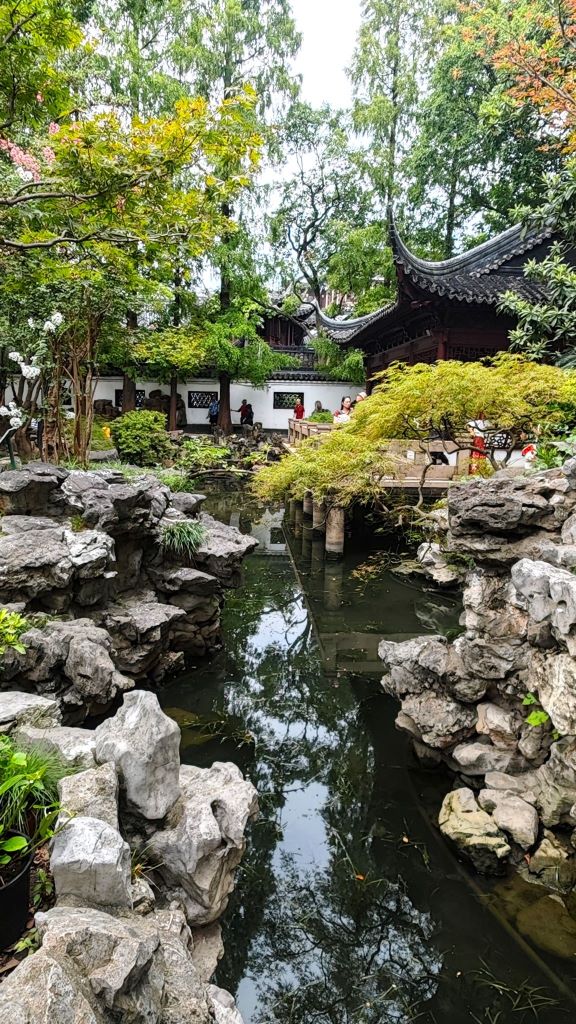
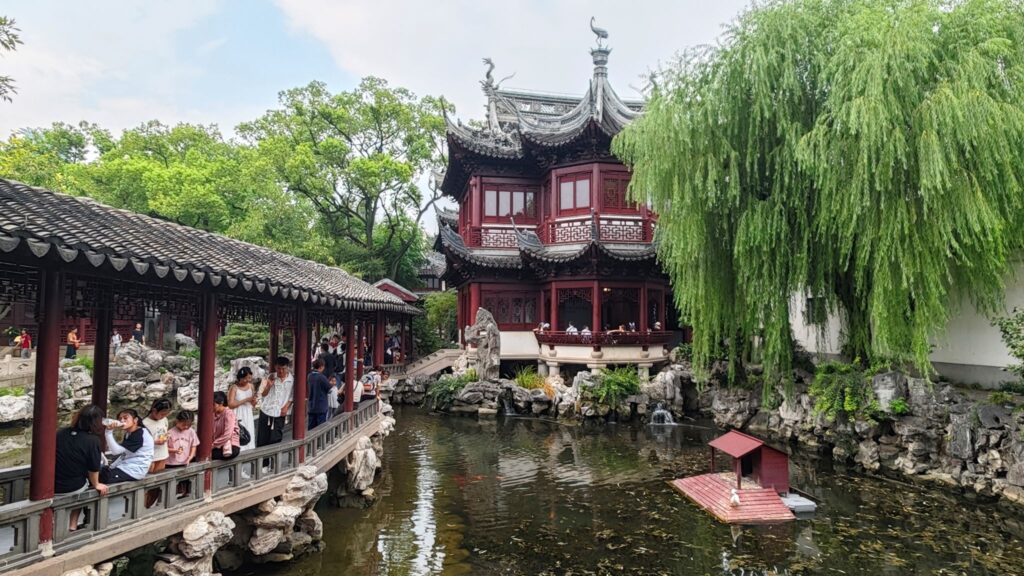
This bridge holds a deeper meaning: straight lines are often considered harbingers of bad luck in traditional Chinese architecture, while zigzag shapes are believed to ward off misfortune.
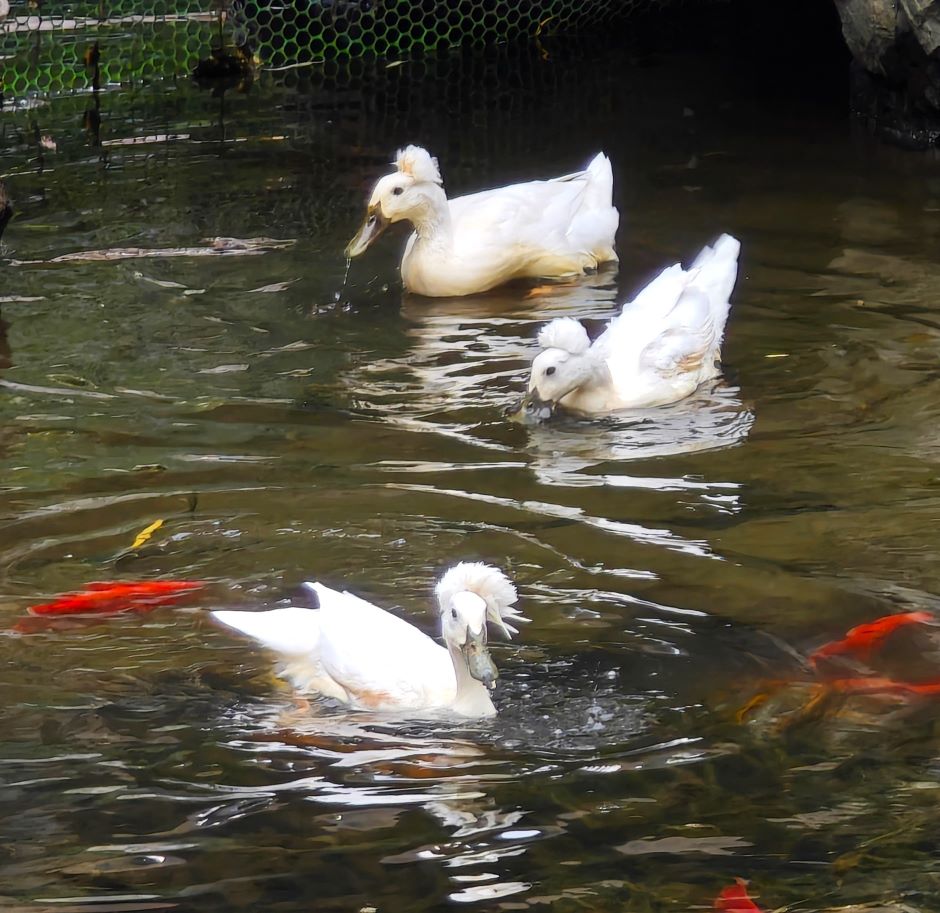
Crossing this bridge leads you to the Huxinting Tea House (湖心亭, Húxīntíng), a historic teahouse built directly on the water.
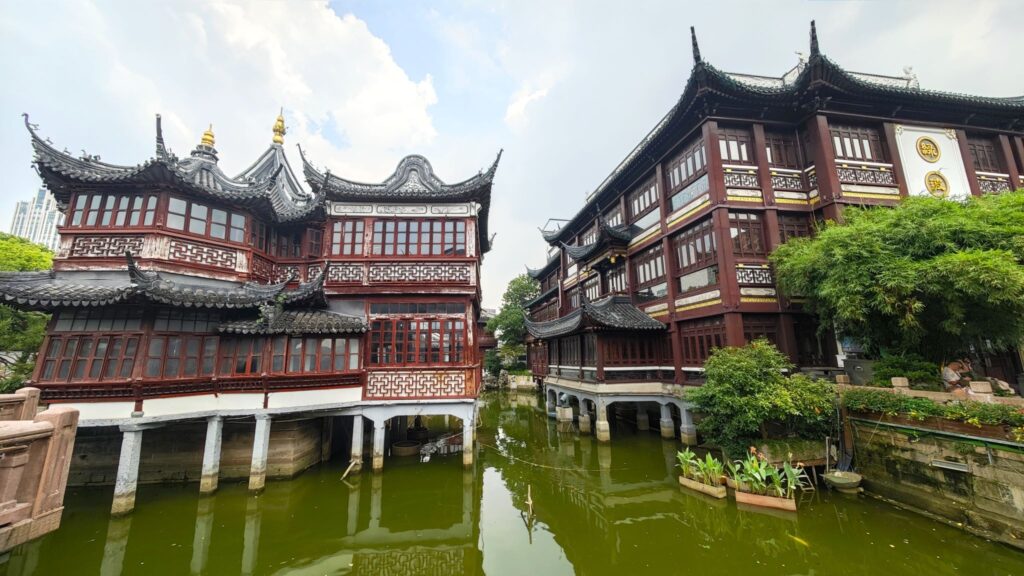
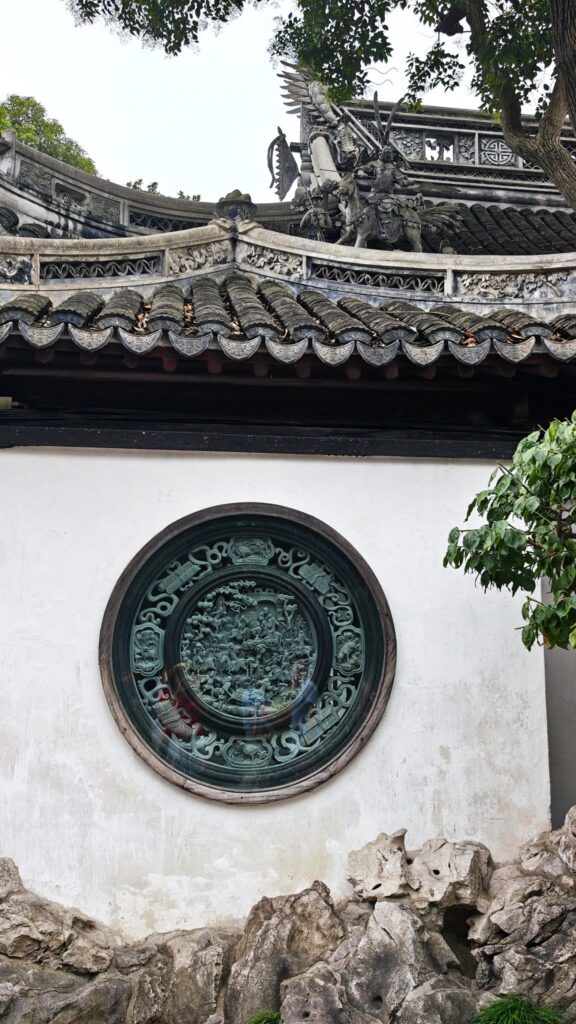
Another highlight is the Dragon Wall (龙墙, Lóng Qiáng), adorned with impressive dragon reliefs.
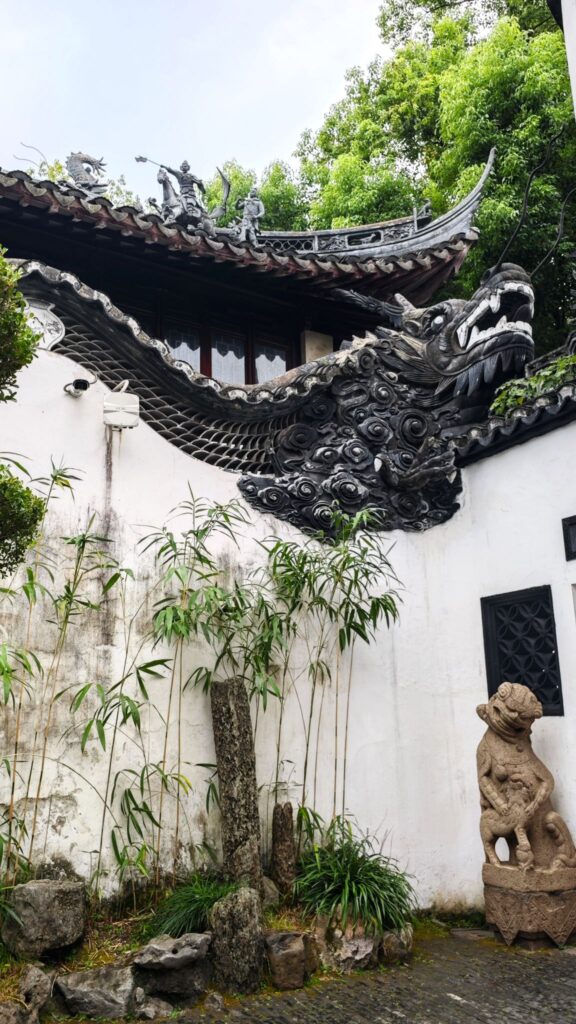
Dragons are a central motif in Chinese culture, symbolizing power, prosperity, and protection from evil.

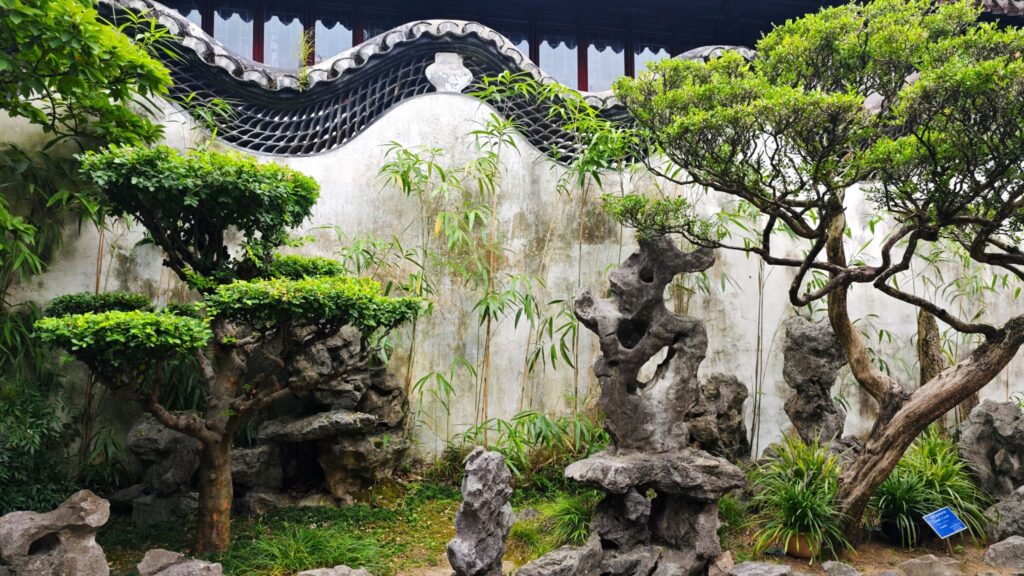
The wall separates different areas of the garden and is a wonderful example of the seamless fusion of art and architecture.
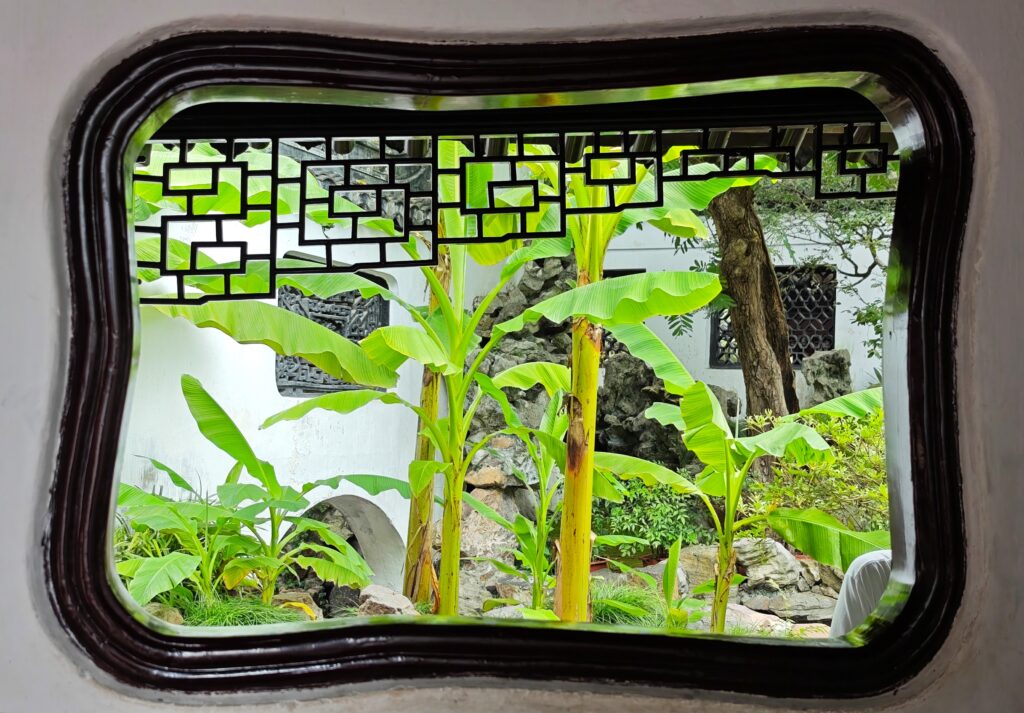
There are also numerous pavilions and ancient halls along the pathways that are particularly worth seeing. One of them is the Hall of Three Ears of Grain (San Sui Tang), one of the main buildings of the garden from the Ming Dynasty. It was used as a reception hall or for ceremonial occasions, and it impresses with intricately carved wooden beams, decorative windows, and delicate ornaments. The Hall of Jade Kindness (Dian Chun Tang) is also an outstanding example of Ming Dynasty architecture and holds special historical significance: During the Taiping Rebellion, a major conflict in Chinese history from 1850 to 1864, it was occupied by the rebels and used as a sort of base or shelter. The Hall of Ten Thousand Flowers (Wan Hua Lou) is known for its elaborate wood carvings and floral decorations, symbolizing prosperity and beauty. It served as both a social gathering spot and a venue for cultural activities, reflecting the harmony between nature, architecture, and tradition. These are just a few of the many beautiful buildings that can be found in the garden.
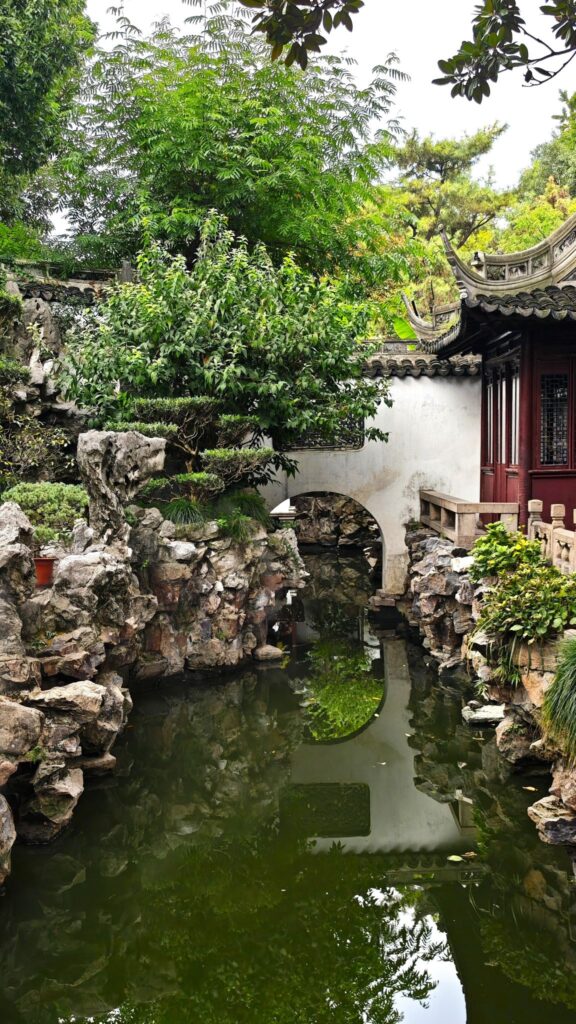
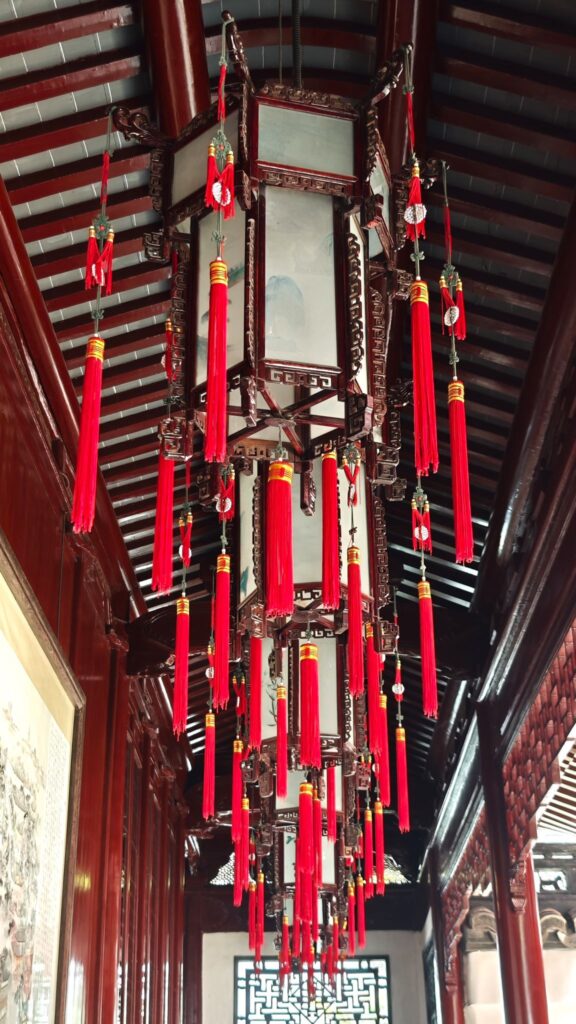
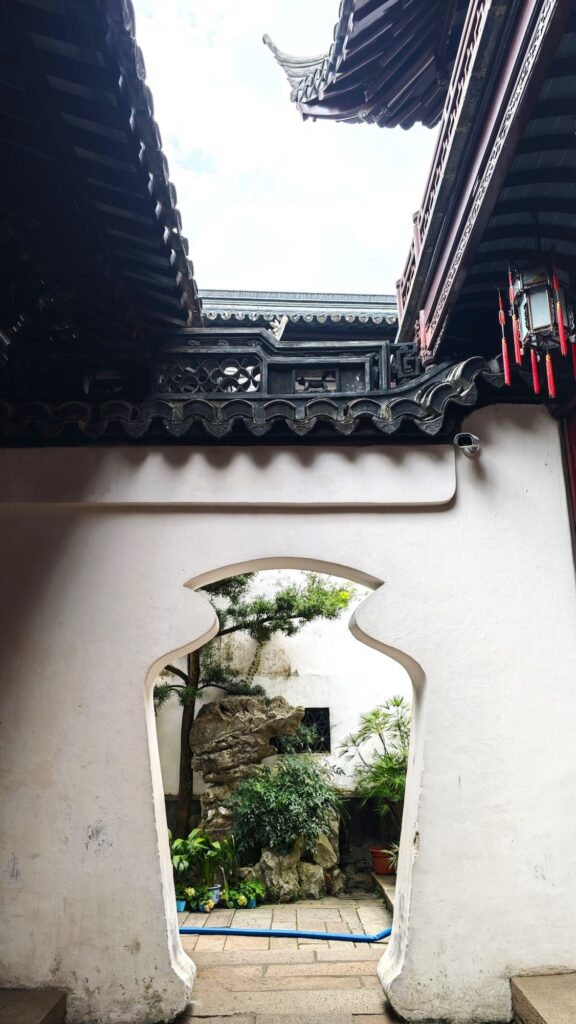
On the edge of the garden in the Old Town lies the bustling Yuyuan Bazaar. Here, visitors are immersed in the colorful hustle and bustle typical of Asian metropolises, with a variety of food markets and shopping options. From tea and small snacks to gemstones, you’ll find a wide selection of classic Chinese souvenirs.
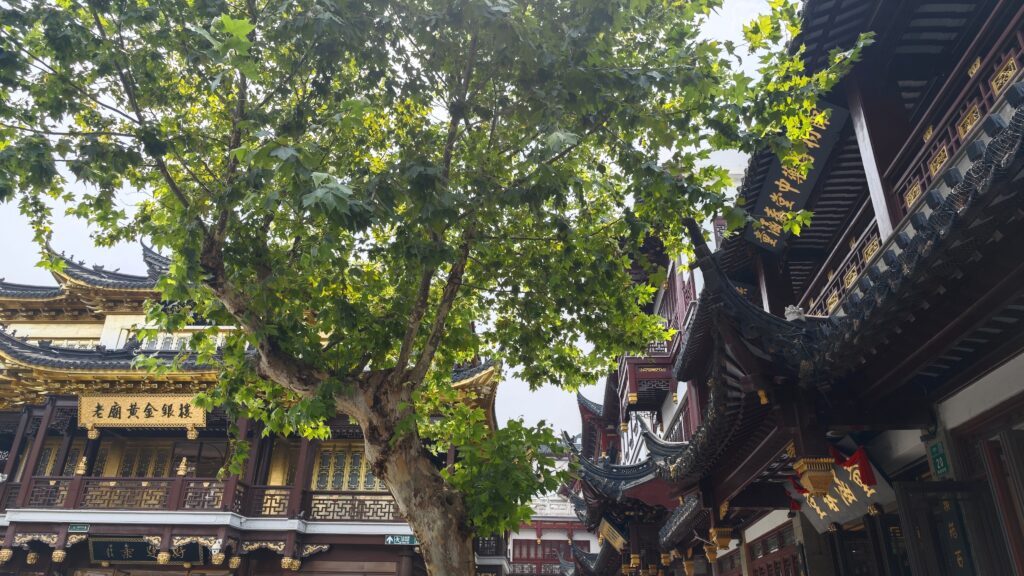
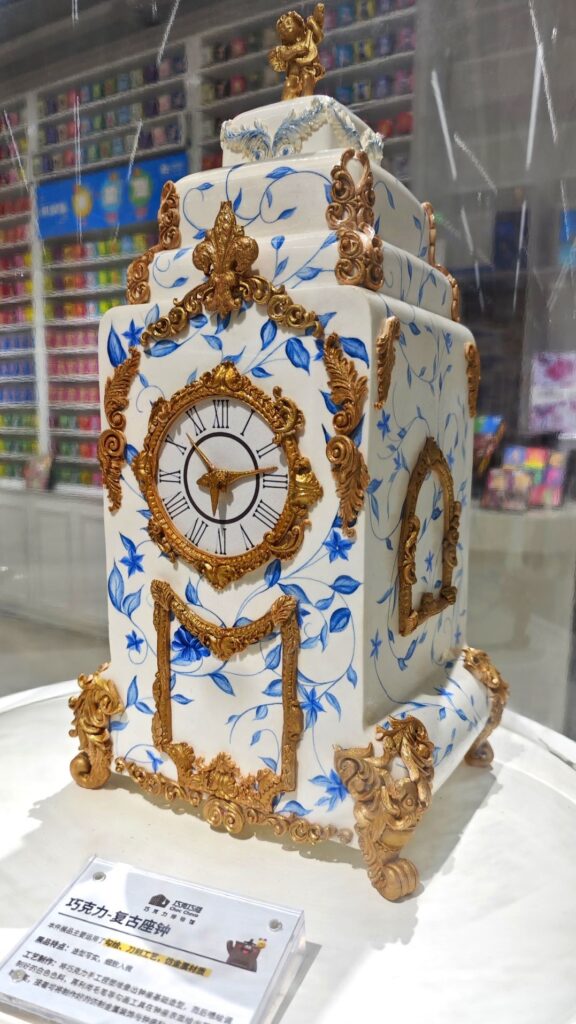
We were particularly charmed by the Chocolate Museum, which features fascinating chocolate artworks, such as sculptures and paintings, as well as delicately presented treats to take home.
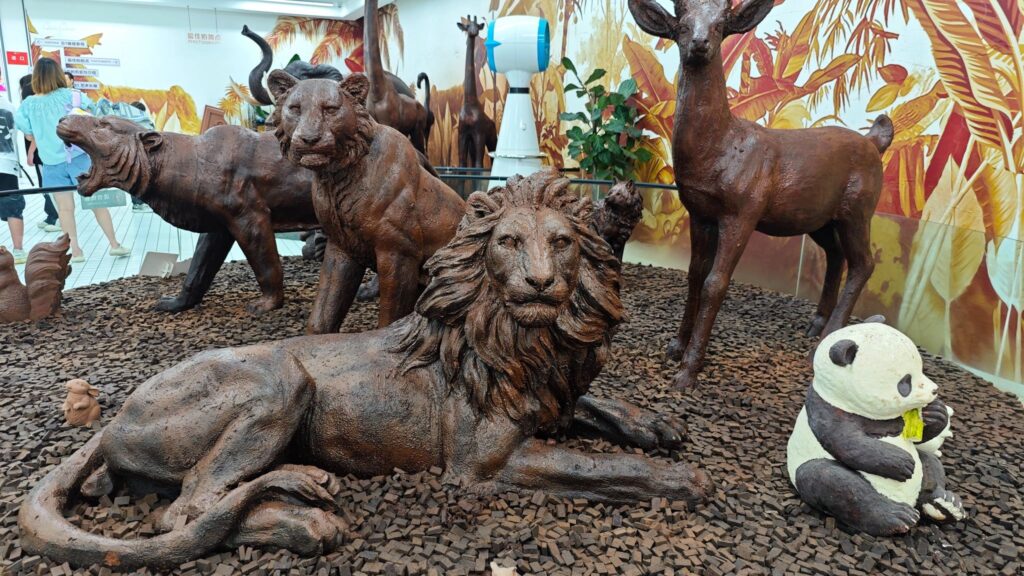
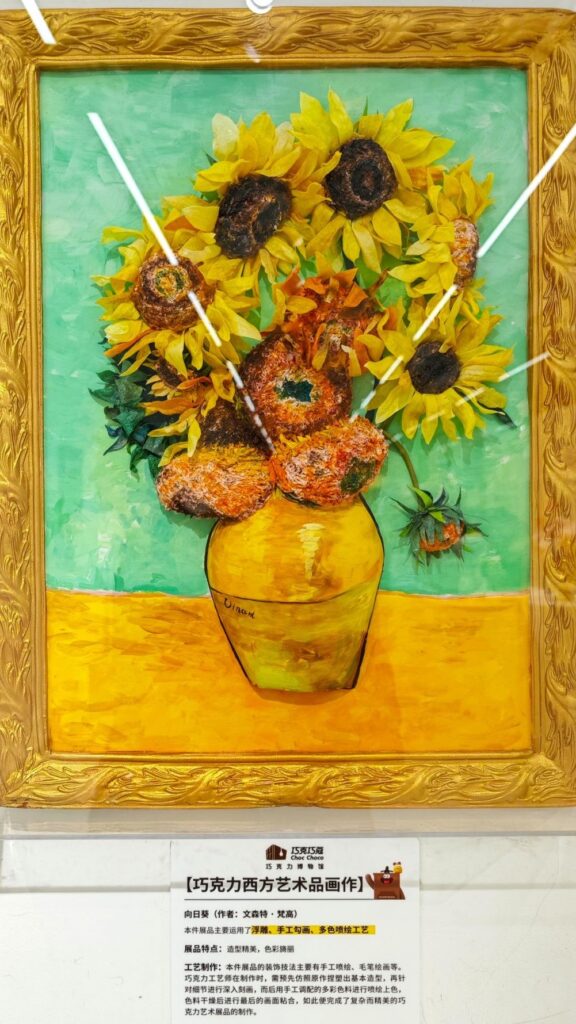
We also captured some impressions from one of the food markets in the Yuyuan Bazaar. Here, there’s an impressive variety of street foods to discover: from dumplings, goose soup –
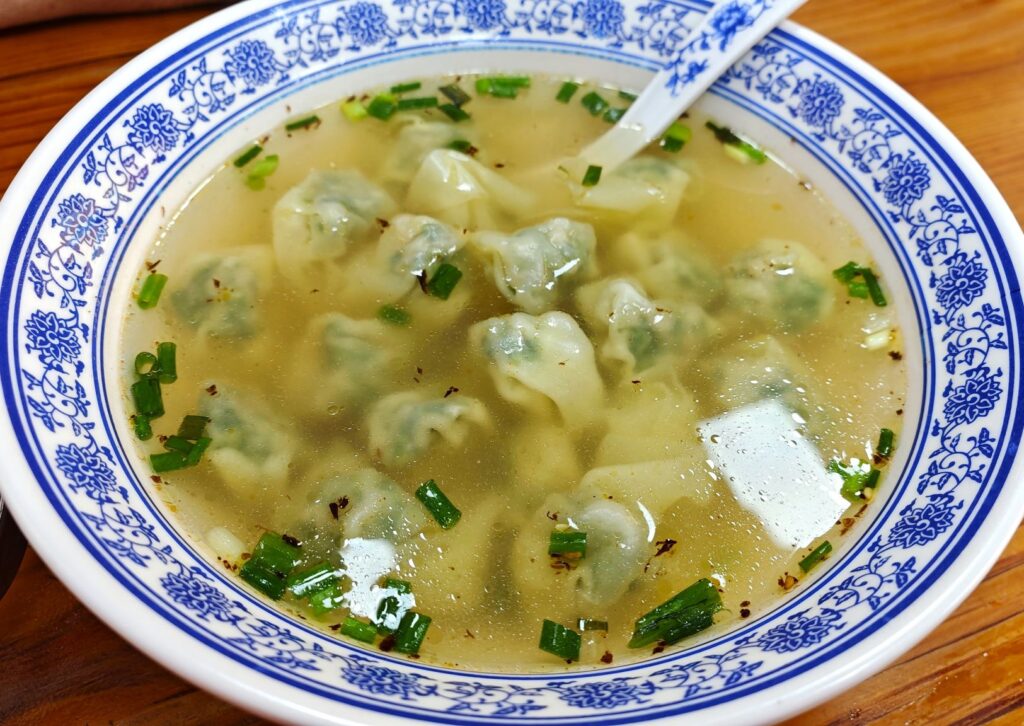
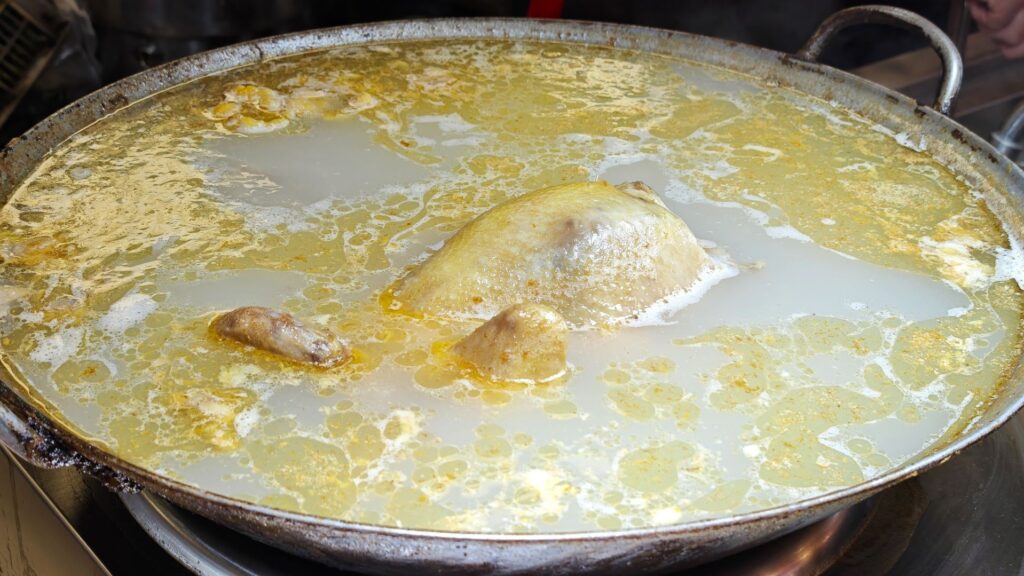
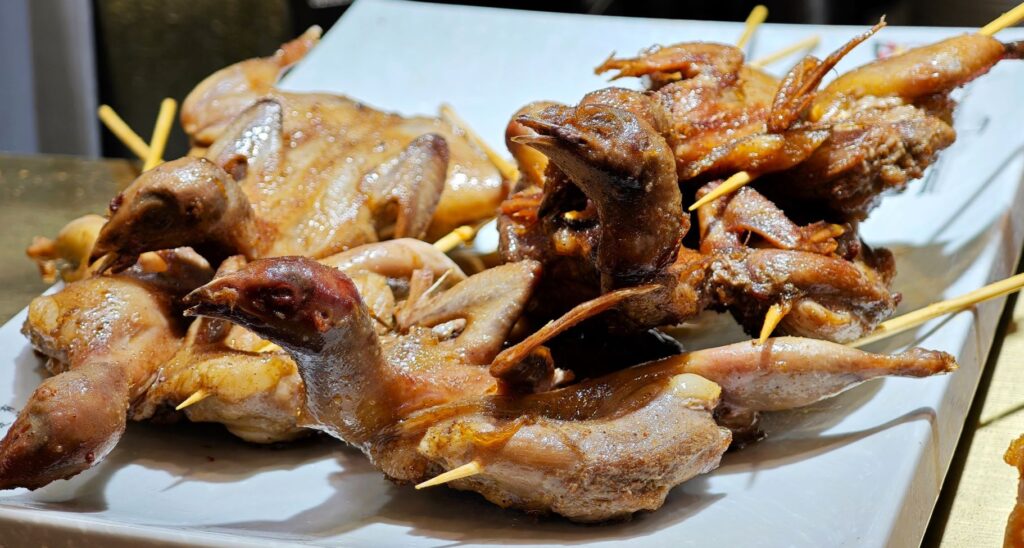
grilled pigeon to dim sum, and mantou buns in all shapes, colors, and designs (such as mantous shaped like bees or sticky rice dumplings in the form of rabbits)
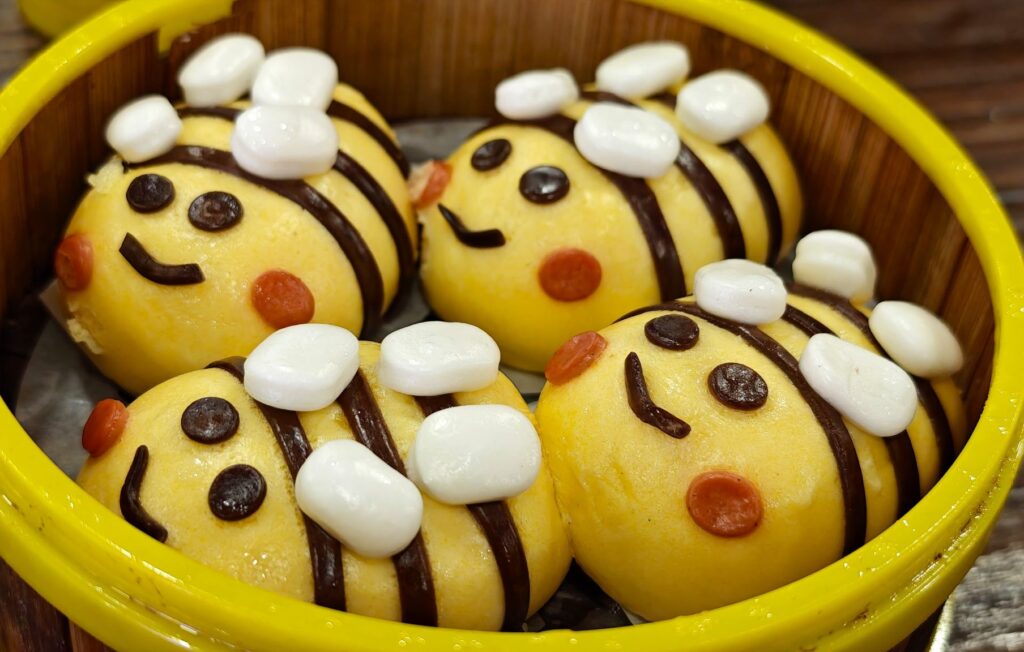
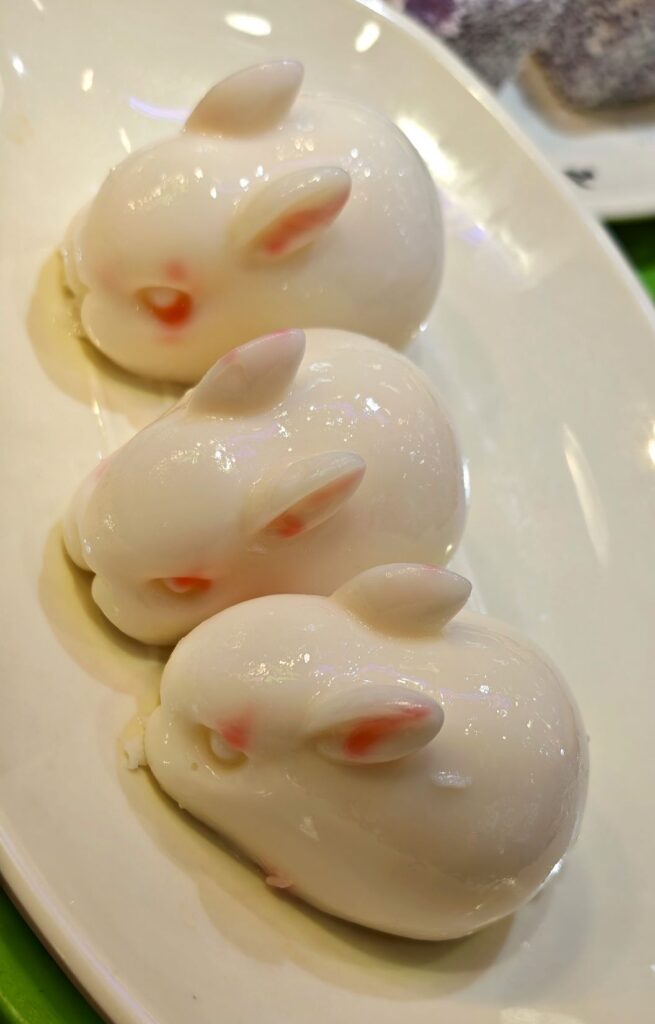
to fried crab snacks—especially popular during crab season in Shanghai—and savory rice dishes.
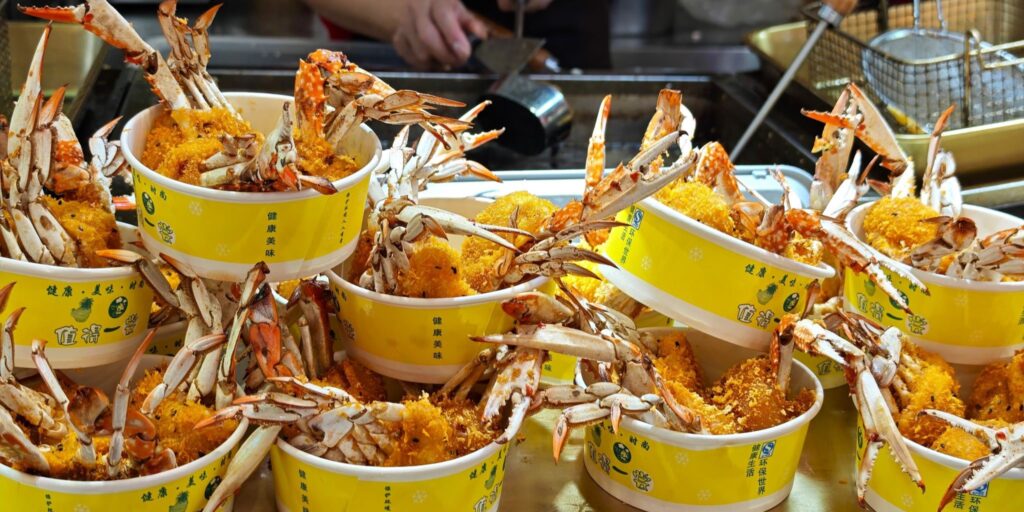
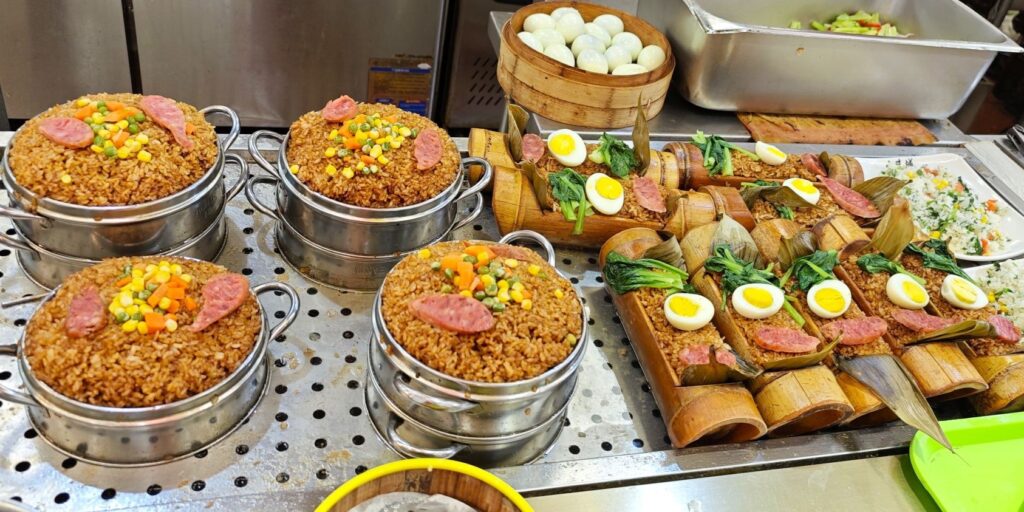
A special delicacy we’d like to highlight is the Xiè Huáng Tāng Bāo (蟹黄汤包). These unique dumplings, found only in the region around Shanghai (Jiangsu), are filled with a delicious mixture of crab meat and crab roe (蟹黄), with a flavorful broth sealed inside. The taste is a blend of umami, rich, and slightly sweet. The dumplings are often served with a straw, allowing you to carefully sip the hot broth first, so it doesn’t spill out when you open the dumpling. Then, you can fully enjoy the soft skin and the tasty filling of crab meat and roe.
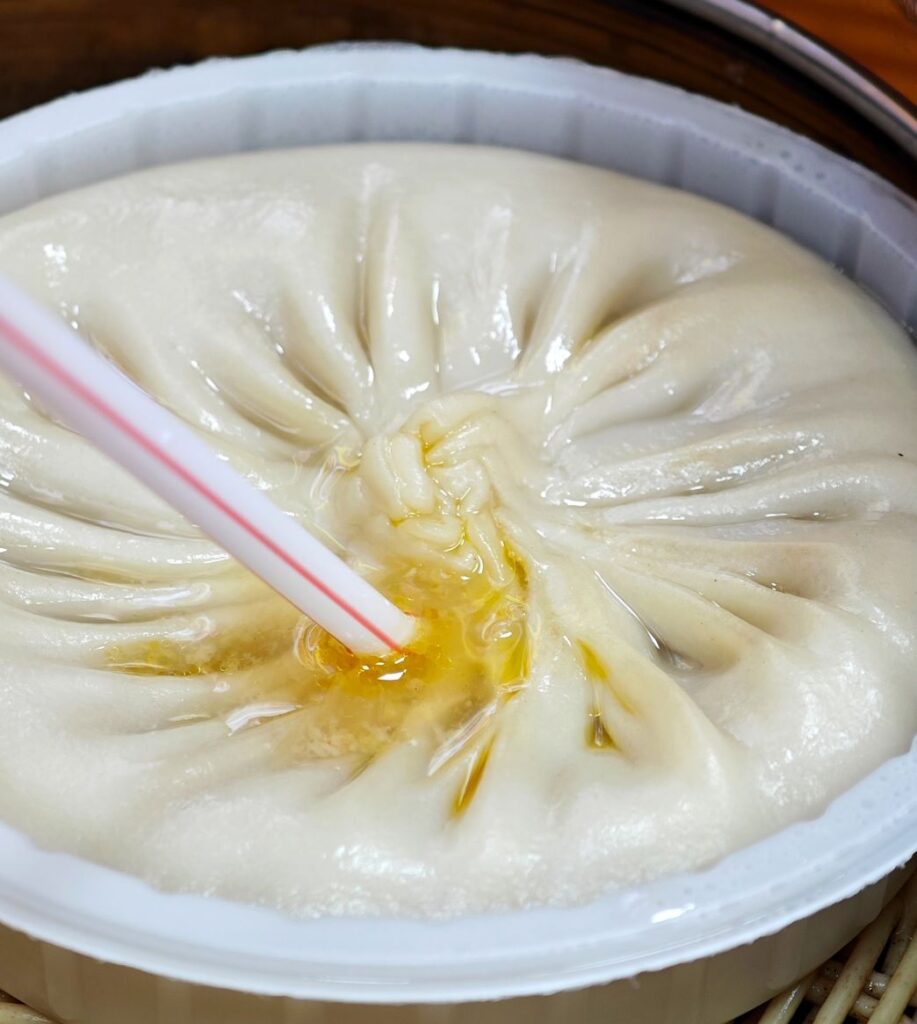
After a long day in the Yu Garden and countless steps through the picturesque alleys of the complex and the surrounding old town, it’s time for a hearty dinner. This time, we’ve chosen a fish restaurant called “Jiāng Biān Chéng Wài” (江边城外), located in a shopping mall near the Loushanguan Road Metro Station. By the way, we’ve already featured this food mall in a previous blog post. The restaurant specializes in Kǎo Yú (烤鱼), a Chinese dish where fish is marinated in an aromatic blend of spices, chili, and other ingredients, then grilled or fried and served with vegetables and rice.
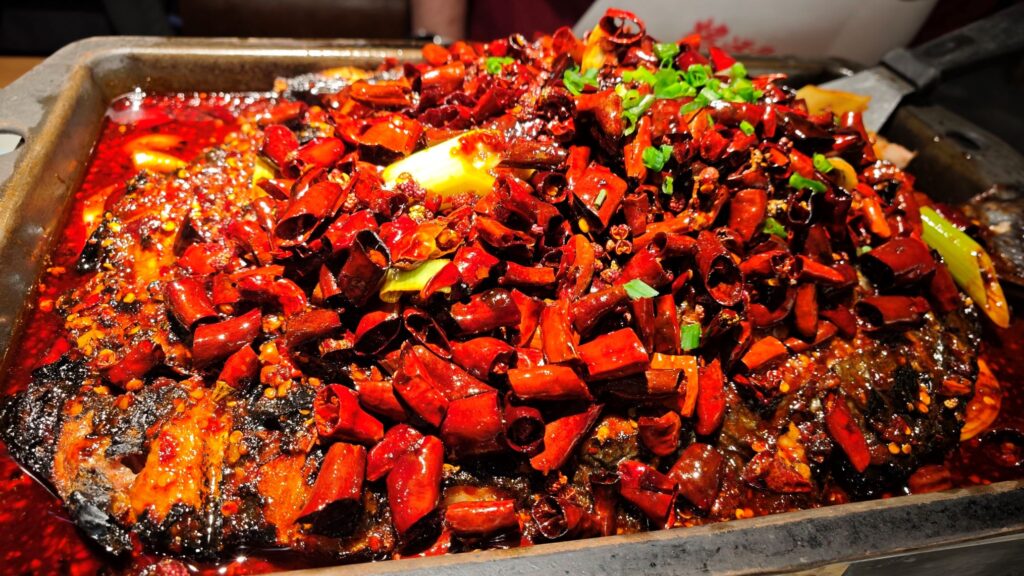
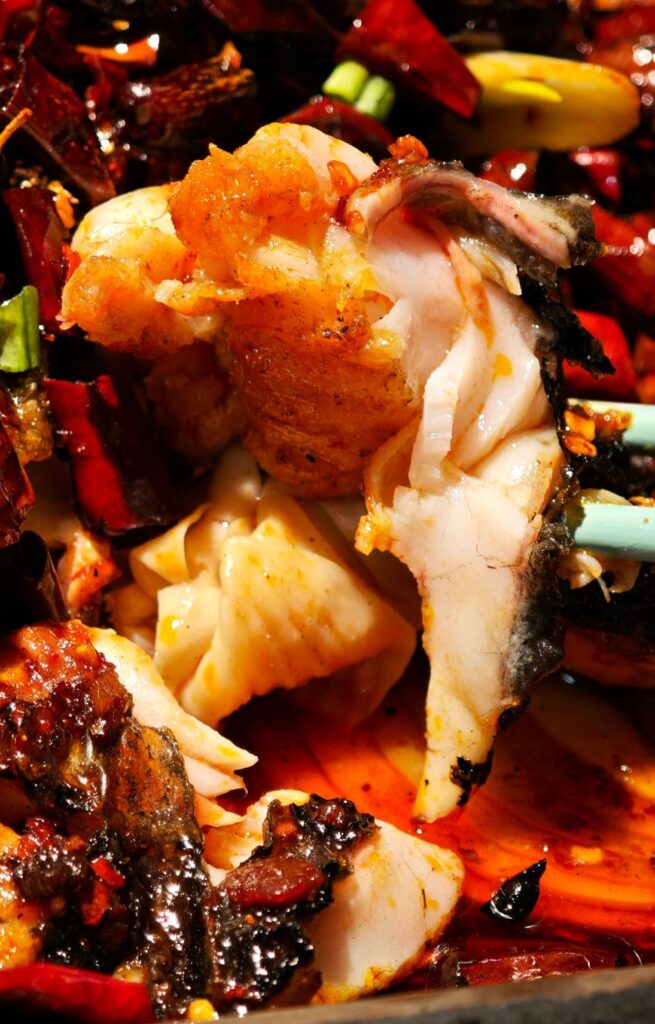
In Shanghai, Guàiwèi Kǎoyú (怪味烤鱼) seems to be very popular. The fish is marinated in a blend of chili, soy sauce, sugar, vinegar, and Sichuan pepper. This unique mix of spicy (mala), sweet, sour, and umami flavors creates an intense taste that is described as “strange flavor” (怪味), which even gives the dish its name.
For some – myself included – this combination can be a bit overwhelming. That’s why we recommend the Xiānglà Kǎoyú (香辣烤鱼) as an alternative, which is prepared with a spicy marinade made from Sichuan pepper, chili, garlic, and ginger. Compared to the Guàiwèi Kǎoyú (怪味烤鱼), it’s less complex and not as sweet, making it more accessible and easier to enjoy for many people.
To make things a bit more varied and balance out the intense flavors of the fish dish, we ordered a few side dishes.
Bīng Cài Shālā (冰菜沙拉) is a fresh salad made from a unique plant with the symbolic name “Ice Vegetable” (冰菜, Bīng Cài), scientifically known as Mesembryanthemum crystallinum. The plant has fleshy, juicy leaves and offers a slightly salty, refreshing taste, similar to a blend of cucumber and lettuce. A tangy dressing made of sesame, vinegar, and soybeans is added to enhance the flavor. This salad is fresh, mildly pungent, and perfect for hot days.

Shānyào Nítǎ (山药泥塔) is made of mashed yam, served in the shape of a tower and topped with fruit jam (果酱) and Chinese hawthorn (山楂). The flavor of the yam is slightly sweet and earthy, while the jam adds a fruity sweetness, and the hawthorn brings a pleasant acidity and a slightly tangy note.
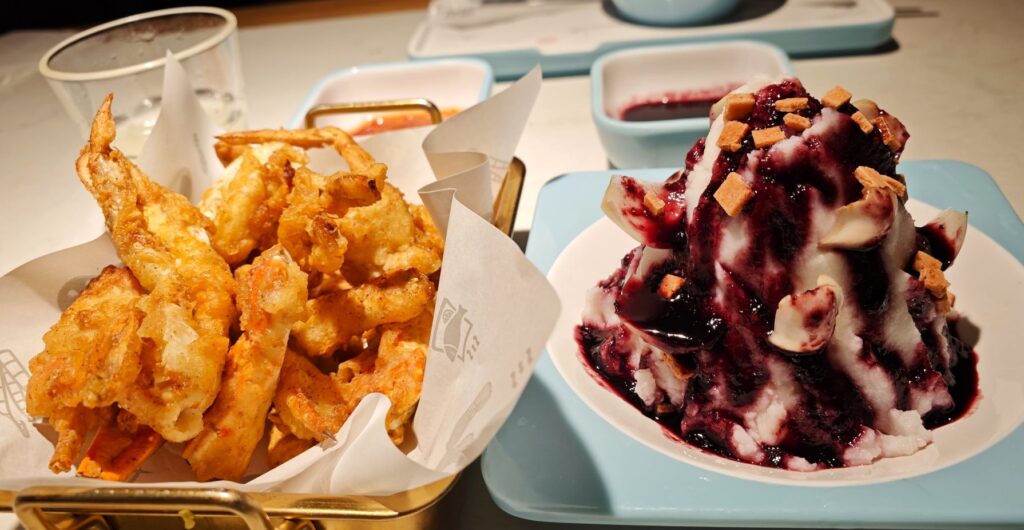
We also had fried crab legs, which are eaten with the shell. They are flavorful with a delicate, slightly sweet meat. The frying gives the crab legs a crispy texture and a pleasantly salty note that complements the tender, mildly briny seafood inside.
We end the day just as it began, enjoying the breathtaking view from our hotel of Shanghai’s illuminated skyline. It’s been a perfect day filled with culture, history, stunning nature, plenty of walking, and, above all, delicious food. As the day draws to a close, we eagerly await our next adventure in China, as we journey to Sichuan province—a food haven we venerate time and again on our blog.
